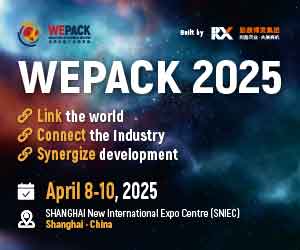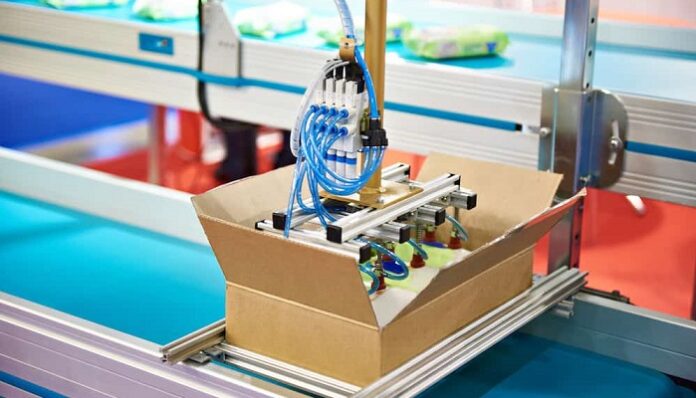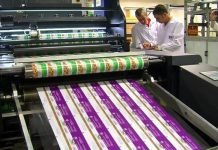As per new market research called Packaging Automation Market by Offering (Solution, Services), Type, End-use Industry (Healthcare & Pharmaceuticals, E-commerce & Logistics, Food & Beverage, Chemical & Refinery, Aerospace & Defense), and Geography—Global Forecast to 2031, the worldwide packaging automation market is all set to reach $118.8bn by 2031. This means that a CAGR of 10.1% from 2024 to 2031 will be witnessed during the forecast period.
So what is Packaging Automation? It happens to be the process of packaging products, making use of automated technologies that either require minimal or no intervention. Notably, automated packaging machines have gone on to transition from singular machines, which automate one step in the packaging process, to integrating all the steps seamlessly into the entire packaging process. The fact is that packaging automation helps to enhance production speeds and efficiency and also makes sure of high-quality control and standardization.
The fast growth of the e-commerce market is one of the reasons why there is a surge in the packaging automation market as well. Apart from this, the strict food safety laws, rising adoption of automated systems across sectors have also played a critical role in the packaging automation market’s immense rise. But there is one reason that sort of restrains the growth of this market, and that’s the high cost of installation.
There are growth opportunities in the market thanks to the surging demand when it comes to packaging automation in the logistics sector and also a rising need for eco-friendly and sustainable packaging. But then there is also a dearth of skilled operators that is acting as a barrier in this segment.
The packaging automation market happens to also be driven by integration when it comes to advanced technology and smart packaging.
Based on its offerings, the packaging automation market happens to be segmented into solutions as well as services. Moreover, the solution is further sub-segmented into erectors and case sealers, sleevers and cartoners, strappers, markers and labelers, case packers, as well as other solutions.
When we talk of the service segment, it is sub-segmented into installation and training, consulting, and maintenance. In 2024, the solutions segment is expected to comprise a larger share of the worldwide packaging automation market.
The segment is anticipated to be worth almost $51 billion in 2024, and this large market share can be primarily attributed to the requirements pertaining to rising manufacturing speed and, at the same time, ensuring the safety of products and workers.
The growth of the segment is supposed to be driven by the rising rollout of automation across healthcare and pharma, e-commerce, refineries, chemicals, and the automotive segment.
As per type, the packaging automation market can be divided into tertiary and palletizing, robotic pick and place, and secondary packaging. The robotic pick and place is anticipated to account for the highest share, worth 41% of the packaging automation market.
This large share can be majorly attributed to the growing demand for pick-and-place robots across numerous sectors like food and beverage, manufacturing, aerospace and defense, e-commerce, healthcare and pharmaceuticals, etc. But it is the secondary packaging segment that is anticipated to see the highest CAGR across the forecast period. There is a growing need for safety in terms of the transportation of products.
As far as the end-use industry is concerned, the packaging automation market gets segmented into e-commerce and logistics, healthcare and pharma, food and beverage, automotive, chemical, and refineries. Moreover, the healthcare as well as pharma segments get further sub-segmented into pharma manufacturing companies and contract manufacturing organizations. The e-commerce and logistics segments are further sub-segmented into contract packaging and logistics companies.
It is well to be noted that the food and beverage segment is anticipated to account for the largest share- 44% in the packaging automation market in 2024. This is primarily attributed to changing consumer needs, very high competition in the packaged food segment, and a surge in packaged food demand. But, it is the e-commerce and logistics sector that is anticipated to have the highest CAGR across the forecast period.
In terms of geography, the worldwide packaging automation market is segmented into Europe, North America, Latin America, the Middle East, and Africa. In 2024, the Asia Pacific market is anticipated to have a share of 38% of the packaging automation market. This will be followed by Europe, North America, Latin America, the Middle East, and then Africa.
The Asia-Pacific market is expected to be worth $23 billion in 2024, and this can be very well attributed to the growing utilization of sustainable packaging across the food and beverage sector.

























